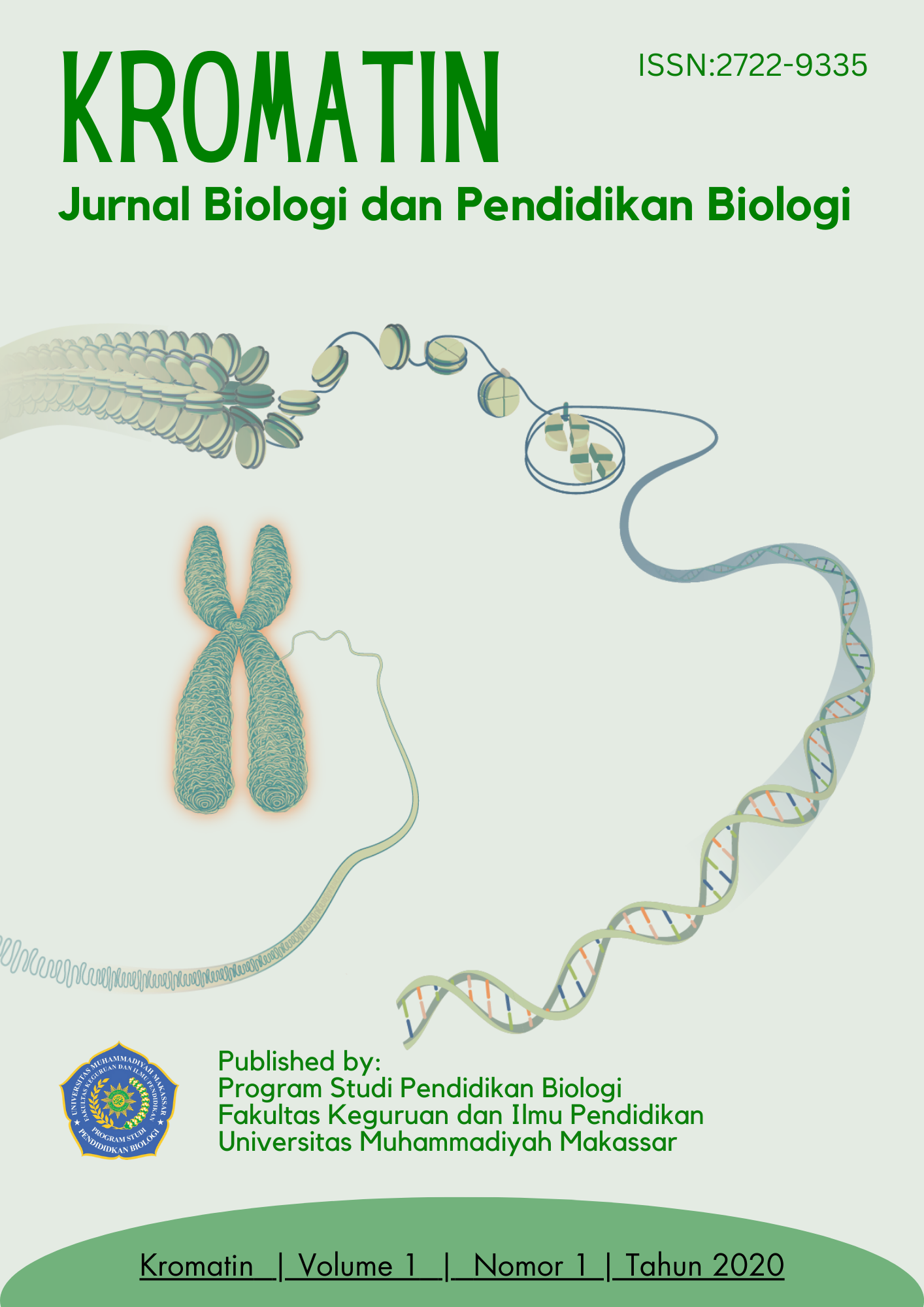Pengembangan media pembelajaran berbasis weblog untuk meningkatkan sikap siswa terhadap biologi dan internet
الملخص
SMAN 2 Sungguminasa. The model of research that used in this research was Research and Development (R&D). The development model that's used is ADDIE. This model consists of five steps namely: a) Analysis, b) Design, c) Development, d) Implementation and e) Evaluation. The purpose of this study is developing Instructional media based on weblog that is valid, practical, and effective. Instruments that used in this research are (1) the validity instrument of weblog-based instructional media, (2) a practical instrument (teachers and students' response toward weblog-based instructional media), and (3) effectiveness instrument of weblog-based instructional media (students' attitudes toward biology and the internet instruments). Based on data analysis, the average of validity media obtained by the three validators was 4.45 (valid). Practicality media teacher elicits responses were 4.6 (very good) and the students response was 4.16 (good). And the value of media effectiveness based on analysis of data obtained an increase in students' attitudes toward biology and the Internet. Increasing students 'attitudes toward biology based on analysis of data obtained by the gain analysis was 0.58 and an increase in students' attitudes to the internet obtained was 0.36. Based on the research it can be concluded that weblog-based instructional media are valid, practical, effective. Keyword : Weblog, research and development, instructional media, biology, internetالمراجع
Harisanty, Dessy. 2007. Kebutuhan Informasi Siswa SMA dan Ketersediaan Sumber Informasi pada Perpustakaan SMA di Surabaya. Diakses dari . tanggal 26 November 2013
Isman, Aytekin. 2004. Attitudes of Students Towards Intenet. Turkish Online Journal of Distnce Education- TODJE October 2004, Vol.5, No.4.
Mill, Steven. 2006. Using the Internet for Active Teaching and Learning. Merrill Prentice Hall. Ohio.
Munir, H. 2008. Kurikulum Berbasis Teknologi Informasi dan Komunikasi. SPS UPI. Jakarta.
Nasr, Ahmad. 2011. Attitude towards Biology and Its Effect on Studen’s Achievment. International Journal of Biology, vol.3, No.4 october 2011.
Prokop, Pavol. 2007. Slovakin Students’ Attitude toward Biology.Eurasia Journal of mathematics, science, and Technology Education, 2007, 3(4), 287-295.
Raharjo, Budi. (2007). Langkah-langkah Membuat “Web Blog”. Diakses di http://mbraharjo.blogspot.com. tanggal 26 Oktober 2013.
Rehman, Kashif. 2009. Student’s attitude toward the use of internet. Iqra University Islamada, Pakistan, Foundation University Rawalpindi, Pakistan.
Rusman. 2012. Model- Model Pembelajaran. PT. Raja Grafindo Persada, Jakarta.
Samad. 2011. Metode Penelitian Pengembangan. http://pakguruku. blogspot.com/2010/01/metode-penelitian-pengembangan.html. Diakses 26 Agustus 2013.
Tasri, Lu’mu. 2011. Pengembangan Bahan Ajar Berbasis Web. Jurnal MEDTEK, Volume 3, Nomor 2, Oktober 2011
Utami, Setya dkk. 2008. Blog sebagai Media Pembelajaran Alternatif. Karya tulis. Fakultas Ilmu Komputer. Universitas Indonesia.
Wallace, Lizanne. 2009. Internet Research Project using the ADDIE Model. Towson University
التنزيلات
منشور
إصدار
القسم
الرخصة
Authors who publish with this journal agree to the following terms:
1. Authors retain copyright and grant the journal right of first publication with the work simultaneously licensed under a Creative Commons Attribution 4.0 Internasional License that allows others to share the work with an acknowledgement of the work's authorship and initial publication in this journal.
2. Authors are able to enter into separate, additional contractual arrangements for the non-exclusive distribution of the journal's published version of the work (e.g., post it to an institutional repository or publish it in a book), with an acknowledgement of its initial publication in this journal.
3. Authors are permitted and encouraged to post their work online (e.g., in institutional repositories or on their website) prior to and during the submission process, as it can lead to productive exchanges, as well as earlier and greater citation of published work.
Licence:
Authors are free to:
1. Share: Copy and redistribute the material in any medium or format
2. Adapt: Remix, transform, and build upon the material for any purpose, even commercially.
The licensor cannot revoke these freedoms as long as the authors follow the license terms, which include the following:
1. Attribution: Authors must give appropriate credit, provide a link to the license, and indicate if changes were made. Authors may do so in any reasonable manner, but not in any way that suggests the licensor endorses the authors or authors’ use.
2. No additional restrictions: Authors may not apply legal terms or technological measures that legally restrict others from doing anything the license permits.
This work is licensed under a licensed under a Creative Commons Attribution 4.0 Internasional License/ CC BY 4.0.


